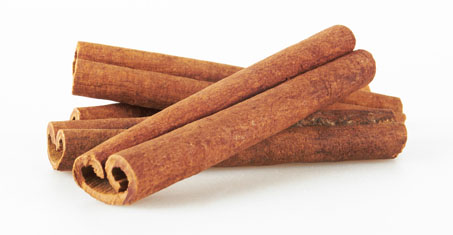What Is Cassia?

Cassia Vera is a red-brown coloured sticks which has a woody/earthy aroma. The natural sweet taste and textures make them great for cooking curries, pastries and muffins. This spice is kept fresh in bags or container and should be stored in a cool, dry place for a long shelf life.
Cassia Plant and Cultivation
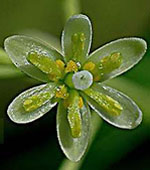
Cassia (Cinnamomum burmannii) is a small evergreen tree, up to 15 m tall, having subopposite leaves. The petiole is 0.5–1 cm long, with a blade that is oblong–elliptical to lanceolate, 4–14 cm X 1.5–6 cm; pale red and finely hairy when young. Older leaves are glabrous, glossy green above and glaucous pruinose below. Inflorescence is a short axillary panicle. Flowers are borne on 4–12 mm long pedicel, perianth 4–5 mm long and after anthesis the lobes tear off transversely about half way. Stamens about 4 mm long, staminodes 2 mm, fruit (berry) is ovoid, about 1 cm long.
Cassia Description
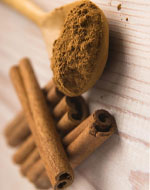
Belonging to the Lauraceous family, Cassia Vera is the stem bark of the evergreen bush native to Indonesia. This reddish brown bark is peeled away from the bush in the form of quills which are then dried and cut to size / into thin strips or ground into powder. Cassia Vera from Indonesia has aromatic sensory qualities. It contains essential oil (mainly cinnamic aldehyd) but does not contain eugenol. Indonesian Cassia Vera is normally found in West Sumatra in the region of the city of Padang.After harvesting, Cassia Vera is brought to our processing warehouse in Indonesia where cleaning, drying, sorting, processing and packaging into different qualities takes place.
Uses of Cassia
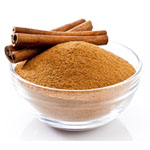
Cassia bark was often burned as incense in the past, and a fat obtained from the fruit was once used to make church candles. The powerful fragrance of either spice can be used in potpourris, in herb pillows and herb bags to keep moths away. It is also one of the ingredients of Carmelite water. Pliny used cassia in a perfume recipe for men in his Natural History, and many sources recommend it as a spice with which to perfume linen. Cassia is now popular in many soaps and men’s cosmetic preparations.
10 Health Benefits of Cassia
1 - Cures Diarrhea - Cassia has varied benefits on the digestive system and being an anti-diarrhea agent is one of them. It can be used to bind the bowels and stop diarrhea episodes. Being an antimicrobial agent, it also cures diarrhea caused by microbial action. It inhibits the microbial growth and stops diarrhea from occurring thanks to its content of fiber, which binds loose stool into healthy bowel movements.
2 - Antidepressant - The use of cassia helps fights depression, uplifts mood and induces warm feelings in the body and mind.
3 - Anti-emetic - This oil can be used to treat nausea and to stop vomiting. It induces a refreshing feeling and drives away those feelings which bring on nausea and vomiting.
4 - Antimicrobial - Cassia inhibits microbial growth and protects from microbial infections. This property is useful for treating microbial infections in the urethra, colon, kidneys, urinary tracts and other parts of the body.
5 - Astringent - It strengthens gums and hair roots, tightens muscles and lifts the skin. It also helps stop hemorrhaging by contracting blood vessels.
6 - Circulatory - Cassia essential oil improves the circulation of blood and thereby facilitates proper distribution of nutrients and oxygen to all the body parts. This property is also beneficial in fighting rheumatism and arthritis.
7 - Antiviral - Cassia is effective in countering viral infections and gives sound protection from cough & cold, influenza and other viral diseases.
8 - Febrifuge - Being an antimicrobial and antiviral agent, Cassia helps fight the infections causing fever and thus helps lower body temperature. The circulatory property of Cassia also helps boost the immune system of the body. The warming effect of Cassia gives relief from the fever as well.
9 - Stimulant - It stimulates bodily functions, the metabolism, secretions, discharges, circulation and also the nervous system and the brain, thereby helping to be more active and alert.
10 - Carminative - Cassia essential oil gives relief from gases forming in the intestines and drives them out of the body. It also stops any further formation of gases.
Producing Countries of Cassia
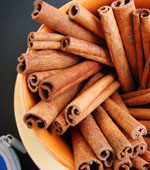
Demand for cassia as spice has always been strong although some substitution occurs based on price, while competition from synthetic alternatives does not noticeably affect the trade. Cassia is mainly produced and exported from the East Asian region making China, Indonesia and Vietnam, the leading producers and exporters. Indonesia and China, the major producers of Cassia have together captured almost 80% of the volume wise. There has been an increasing trend in export of cassia products from Indonesia, China and Vietnam. Other major producers include Srilanka and Madagascar.
Consuming Countries of Cassia

The major market of Cassia is the European Commision (EC), within which France is the biggest importer. In recent years the United States has emerged as the largest importing country. Imports into the USA have risen in recent years and, with a soft drinks market which shows no sign of weakening, demand for cassia oil is expected to remain strong. Imports from Japan and Hong Kong are almost entirely re-exports of China. The UAE is the major buyer of Chinese cassia bark and leaf oil. Vietnam Cassia is exported to the USA. Indonesia Cassia (C. burmannii) is also an important export product to USA. Cassia vera from Indonesia is mainly shipped to Europe, India, Taiwan, Canada, USA & Korea.
Recipe for Beverages with Cassia
Pina Colada Punch
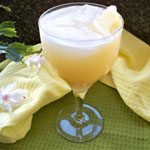
Ingredients: A: 5 Piece dried ginger root -- bruised with spoon B: 5 tablespoons Light-brown sugar C: 5 tablespoons Cassia bark -- broken in pieces D: 3 1/3 cups Water E: 10 Chin
Preparation MethodA: Put ginger, sugar and cassia bark in a saucepan. B: Add 2/3 cup water and bring to a boil. Cover and simmer 5 minutes. Remove from heat and add teabags. C: Let stand 5 minutes, then strain into a bowl. In a blender or food processor, blend coconut and boiling
Recipe for Cooking with Cassia
Java Chicken

Ingredients: A: 3 lbs chicken B: 4 brazil nuts, ground C: 1/2 tsp chilli powder D: 2 tsp coriander ground E:1 tsp galangal (laos powder) F: 1 garlic clove, crushed G: 1/2 tsp turmeric, ground H: 4 tbsp oil I: 2 onions chopped J: 3 cups coconut milk K: 2 in cassia bark L: 1 lemon grass stalk or 1 tsp powder M: 2 tbsp lemon juice N: salt
Preparation MethodA: Joint chicken and cut across bone into serving pieces. B: Mix nuts, chilli, coriander, galangal, garlic and turmeric to a paste with a little oil and rub over the chicken. Leave for a few hours. C: Heat remaining oil in wok or pan and fry onions until golden. Add chicken pieces and fry until golden. D: Gradually add coconut milk, stirring while bringing to the boil to prevent curdling. Add lemon grass and cassia and simmer uncovered for about 30 minutesor until the sauce is thick. E: Stir in lemon juice and add salt to taste.
Recipe for Dessert with Cassia
Cassia Ice Cream
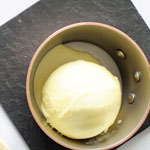
Ingredients: A: 15g of cassia, crushed B: 250ml of milk C: 75ml of double cream D: 2 egg yolks E: 65g of caster sugar
Preparation MethodA: Gently warm the milk and cream in a pan, then add the cassia and set aside to infuse for 2 hours. B: Once infused, bring the milk, cream and cassia to the boil. Meanwhile, whisk the eggs and sugar together until thick and pale, then pour the cream and cassia mix into the eggs, whisking to combine. C: Pour everything back into the pan and stir over a low heat until thickened. D: Pass through a sieve into a mixing bowl and set over iced water. Stir so that the mixture cools quickly and taste the mix. If needed, return the cassia bark for a while longer to achieve a deeper flavour. E: Once the mixture is chilled and the flavour is to your liking, churn in an ice cream maker. Store in the freezer until required.

